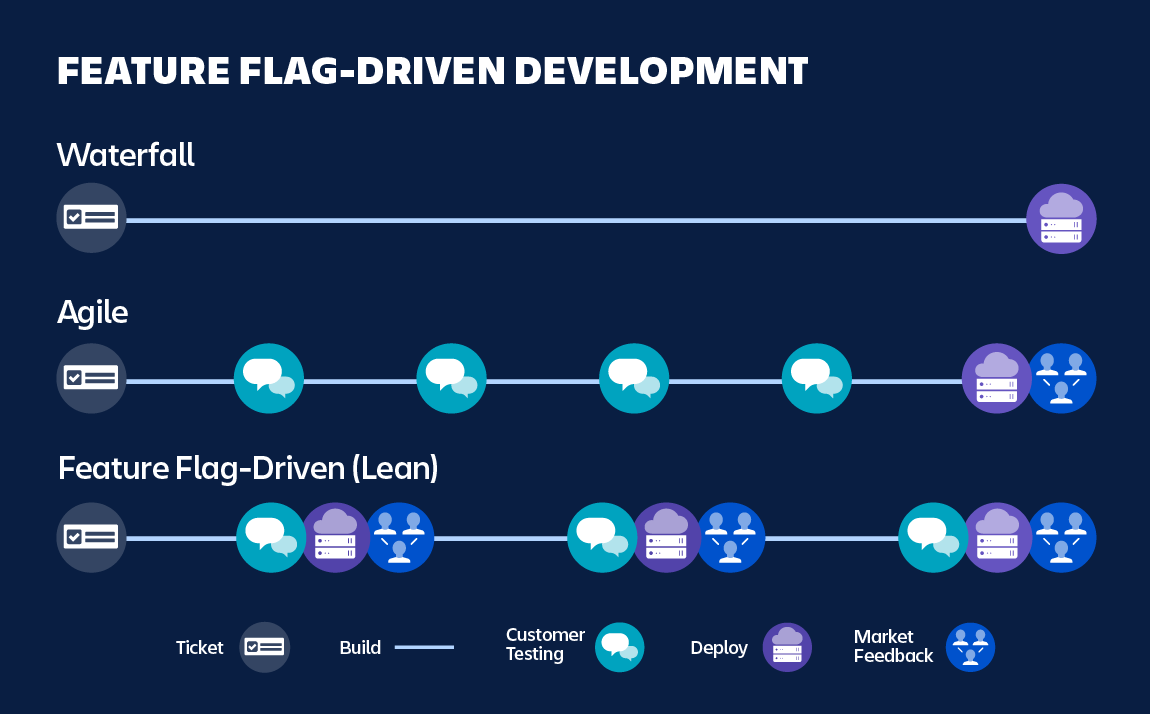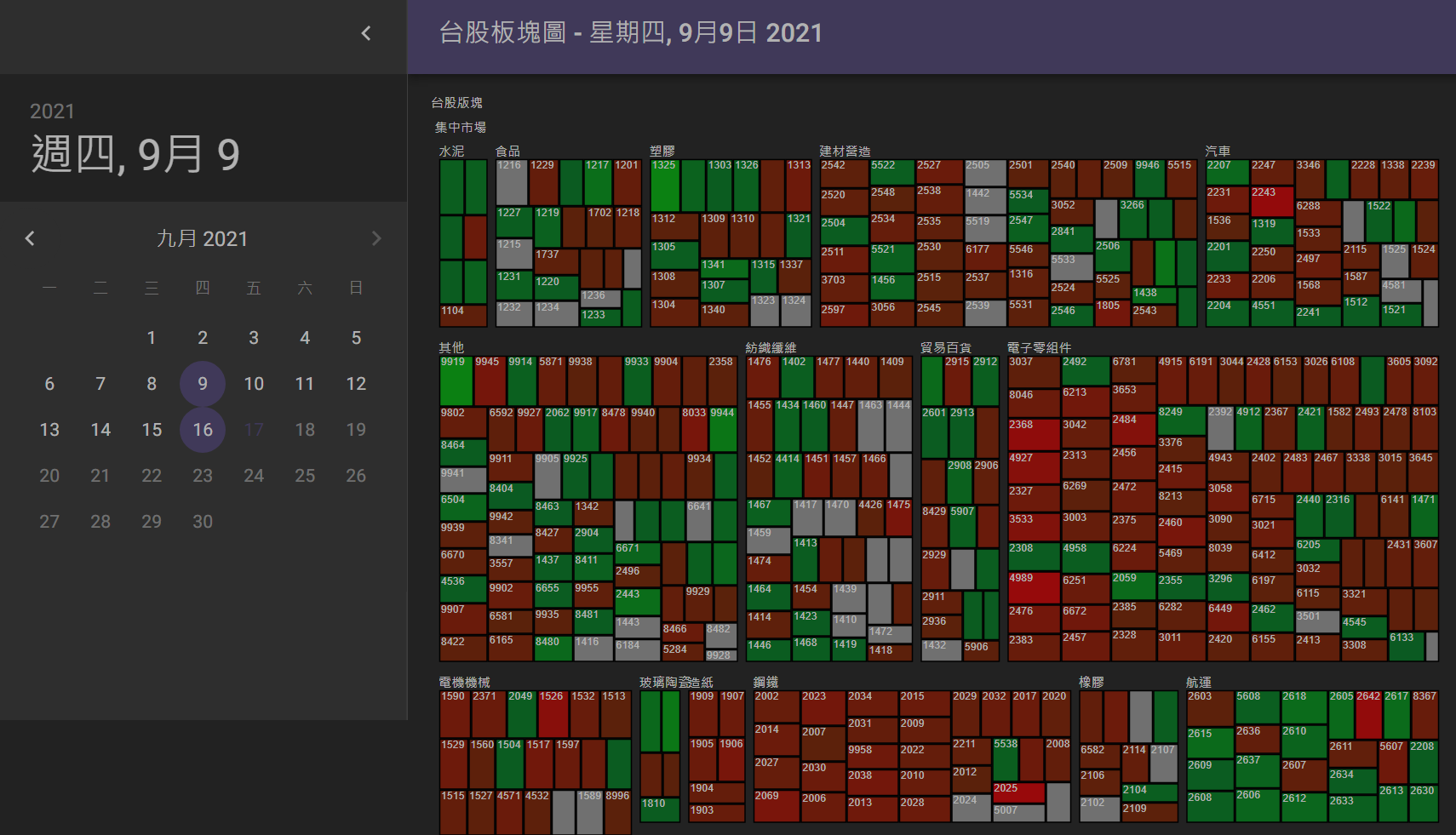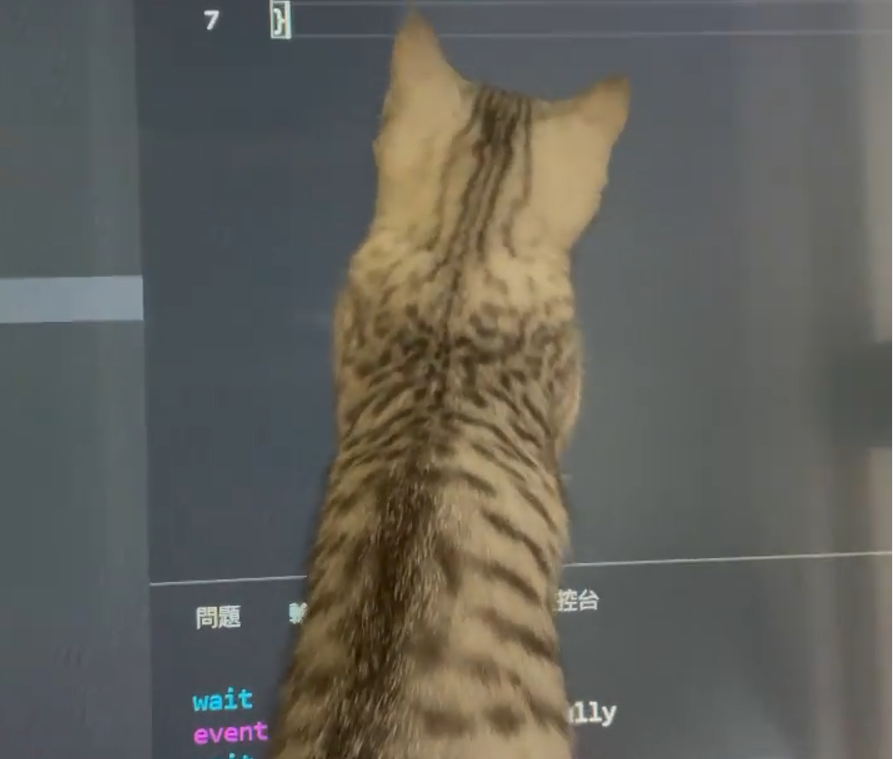之前一直有在思考, 如果把 Feature toggles或Feature flags帶入開發流程可以有甚麼幫助, 先撇開A/B Test不談(因為這還是要配合產品策略考量), 在一個開發Sprint週期時間越來越短下, 一個feature的完成通常也需要跨越多個sprints, 如果加上某些可能需要配合event時間推出的功能, 這對release也是會帶來一些挑戰, 理想化的狀況就是最新的程式碼一直都在, 測試沒問題後開個開關就可以打開, 甚或搭配一些技巧可以讓QA也能夠在生產環境驗證還沒release的功能
需要feature toggles的場合, 可能前後端都會有機會, 不過, 我想了一下, 後端還是可以從API版本或是其他方法隱藏未釋出功能, 而從前端一次隱藏整個功能區塊或是整個頁面, 或許是一個比較好開始切入的部分
先來介紹一下Feature toggle好了
Feature Toggles
Feature Toggles (又名Feature Flags)是一個應該算是常見的軟體開發方式, 藉由開關旗標(flag)來開啟或隱藏程式中的功能, 土法一點, 你是可以自訂一個布林變數, 在release之前去打開或關閉它(true or false), 當然這樣彈性比較小, 理想上當然會希望可以彈性隨時開關
根據Martin Fowler這篇FeatureToggle以及Pete Hodgson先生寫的這篇: Feature Toggles (aka Feature Flags), Feature toggles根據用途可以分做不同種類(後面那篇介紹比較詳細):
- Release Toggles: 這就如同前面講的, 開關或隱藏程式中功能, 或許是還未完成之功能, 可以搭配 trunk-based development服用, 通常Release toggles的變動頻率應該要是相當小的, 也可能等功能穩定後就會被拿掉
- Experiment Toggles: 用在做A/B Test實驗, 會需要經過一些條件判斷來做啟用或禁用, 通常會根據request的資訊有變動
- Ops Toggles: 用在跟系統運維相關, 比如說系統問題臨時需要下架, 需要上公告頁面, 或是像這種狀況需要下架某些功能(一個想法: 或許可以搭配系統監控使用)
- Permission Toggles: 用在限定特定使用者可以使用, 或許直覺會想到是針對有權限控制的功能, 不過其實還可以用在Campaign/Event相關功能, 如果需要提早內部做dog fooding, 或許就可以考量beta user whitelist的作法, 搭配Permission Toggles
類別只是一種定義而已, 真正使用狀況或許會更複雜搭配, 也可能需要考慮flags之間的相依性跟連動關係, 不過這篇並不是要討論這部分, 這篇會以簡單的實現Release toggle來先做探討
關於feature toggles資源跟相關探討也可參考 The Hub for Feature Flag Driven Development
Feature toggles的解決方案
有人提出方法, 就會有人提出解決方案和產品, Feature toggles相關的產品其實非常多, 商業產品有:
- LaunchDarkly
- Unleash
- HappyKit
另外也可以找到不少Open source的
- Togglez (Java)
- FF4J (Java)
- Finagle (Finagle有內建, 不過不好用)
- Feature Flags API for Go (Go)
你可以從The Hub for Feature Flag Driven Development找到一大堆
但這些絕大部分作法是把feature toggles的設定集中管理, 不管是放在資料庫, 或是有一個server來提供(後面也是放資料庫)
個人是覺得, Feature toggles並不是主角, 而是跑龍套的, 應該盡可能的輕量化, 做成獨立系統有點多了, 在Cloud native (k8s native)時代, 考慮用檔案來存設定(搭配ConfigMap), 加上lib, 應該是相對輕量的作法
因此針對這想法, 我在Next.js上做了幾個做法來驗證, 這邊把我的作法跟碰到的狀況做一個紀錄
基本設計
首先, 我先想了一下, 我在Next.js上要怎使用Feature toggles比較合適, 搭配tag應該是最為易讀的方式, 像是
<div>
<WithFeature feature="feature1">
<div>This is new feature</div>
</WithFeature>
<Link href="/">HOME</Link>
</div>
用一個區塊包藏住需要開關的部分, 再由讀取到的設定做為開關
另一個想到的方式是:
<PageWithFeature feature="feature3">
<Link href="/">HOME</Link>
</PageWithFeature>
這種跟前一種的不同是, 如果功能未打開, 區塊就不會顯示, 但整頁的其他部分還會顯示, 但第二種應用在, 整頁都是新功能, 不想因為提早被發現URL而露出, 所以功能未打開的情況需要顯示404
另外config的設計希望是一個yaml檔案給程式去讀取, 像這樣:
features:
feature1: false
feature2: true
feature3: true
offline: false
使用Custom App跟React context來做一個通用設計
為何說是通用設計? 這邊是希望每個需要用到toggle的頁面不用自已寫載入設定的部分(後面會講個範例是有需要的), 而是只要直接用 <WithFeature feature="feature1"> 就好
Next.js有支援“Custom App”, 所以我們載入config的部分可以直接放在"_app.tsx" 或 “_app.jsx“內就可以讓所有頁面共用(詳細請參考文件)載入部分的程式碼, 另外還得搭配React context才能順利的把設定下傳到component
首先, 我們需要先來設計一個Context用來傳遞設定給WithFeature的元件(Component)
import { createContext, useState } from "react";
type FeatureMap = {
[key:string]:boolean
}
export const FeatureContext = createContext({features: {} as FeatureMap})
這邊設計很單純, 假設每個feature都是true或false的開關, 前面的config yaml也是這樣的
在_app.tsx我們則需要有這東西:
import { FeatureContext } from '../context/featurecontext'
function MyApp({ Component, pageProps }: AppProps) {
return <FeatureContext.Provider value={{features:pageProps.features}}><Component {...pageProps}/></FeatureContext.Provider>
}
這邊是把pageProps裡的features給帶到FeatureContext以讓後面的可以讀到, 那pageProps是又哪裡來的? 這邊我們就得去實作app.getInitialProps了, 這個在每個page初始化都會呼叫到它, 並把它產生的pageProps給餵到前面那個function
那是不是就可以把下面這段直接放到getInitialProps就可以取得feature flags的設定了呢?
const configFile = path.join(process.cwd(), 'features.yaml')
const yaml = await fs.promises.readFile(configFile)
const config = YAML.parse(yaml.toString())
答案是"不行!!”, 為何? 因為在Next.js的設計上:
getInitialProps是會有可能在client(瀏覽器), server跑- 除非你頁面實作上有
getServerSideProps, getInitialProps才會總是在server端跑 - 只有
getServerSideProps,getStaticProps才可使用server端(node.js)API, 例如讀檔 (還有一個則是API, 但API實做不同, 我不規在此類) getServerSideProps只設計給頁面的實作使用, 所以每頁有自己的 getServerSideProps, 但 App沒getServerSideProps
因為client跟server都會有機會呼叫到, 如果要讓它們能夠共用, 那就只有做一個API給它, 我們在page/api目錄底下開一個features.tsx的檔案, 內容是
import { NextApiRequest, NextApiResponse } from "next"
import fs from 'fs'
import path from 'path'
import YAML from 'yaml'
type Features = {
[key:string]:boolean
}
export default async function handler(
req: NextApiRequest,
res: NextApiResponse<Features>
) {
const configFile = path.join(process.cwd(), 'features.yaml')
const yaml = await fs.promises.readFile(configFile)
const config = YAML.parse(yaml.toString())
res.status(200).json(config.features as Features)
}
那我們getInitialProps就可以這樣寫:
MyApp.getInitialProps = async (appContext: AppContext) => {
const appProps = await App.getInitialProps(appContext)
const req = appContext.ctx.req
var host = req
? req.headers["x-forwarded-host"] || req.headers["host"]
: window.location.host;
const resp = await fetch(`http://${host}/api/features`)
const features = await resp.json()
appProps.pageProps['features'] = features
return { ...appProps }
}
這邊有一點需要注意的, 雖然用fetch, 但它client端, server端用的是不一樣的, 雖然是長一樣的API, 所以這邊的URL是不可以用相對路徑的("/api/features”), 原因就是在server端只有相對路徑是無法知道實際要呼叫哪裡, 所以這邊還是組出一個完整的URL來使用(不過這實做有點不是很好, 需要改, 當PoC就算了 :p)
所以WithFeature就可以長這樣:
import { ReactNode, useContext} from "react"
import { FeatureContext } from "../context/featurecontext"
export type FeaturesProps = {
children?:ReactNode
feature?: string
}
const WithFeature = function(props:FeaturesProps) {
const {features} = useContext(FeatureContext)
if(features && props.feature && features[props.feature]) {
return (
<>{props.children}</>)
}
return <></>
}
export default WithFeature
因為features是放在FeatureContext中, 所以我們可以透過useContext來取值
這作法不算難, 而且也蠻好運用, 只要在每個需要的頁面自行運用WithFeature即可, 但缺點是甚麼? 基本上它算是CSR(Client side rendering), 而且要甚麼flag都是透過API跟server要, 會被看的一清二楚外, 或許可能還有方法偽造以至於你的功能提早被發現
SSR (Server Side Rendering)的作法
Next.js強大的地方就是它有支援SSR(Sever side rendering)和SSG(Server side generation), 兩者的好處就是在server端就把頁面內容給產生好
假設我們有一頁叫做Post3, 實作是這樣的:
import { NextPage } from "next";
import { GetServerSideProps } from "next"
import fs from 'fs'
import path from 'path'
import Link from "next/link";
import YAML from 'yaml'
import WithFeature from "../components/feature2";
import PageWithFeature from "../components/feature3";
type Params = {}
type Props = {
features: any
}
const Post3:NextPage<Props> = (props:Props) => {
return (
<FeatureContext.Provider value={{features:props.features}}>
<PageWithFeature feature="feature3">
<WithFeature feature="feature4">
this is new feature 3
</WithFeature>
<Link href="/">HOME</Link>
</PageWithFeature>
</FeatureContext.Provider>
)
}
export default Post3
export const getServerSideProps:GetServerSideProps<Props, Params> = async (ctx) =>{
const configFile = path.join(process.cwd(), 'features.yaml')
const yaml = await fs.promises.readFile(configFile)
const config = YAML.parse(yaml.toString())
return {
props: {
features: config.features
}
}
}
這頁面可以透過/post3來存取它, 這個頁面由於實做了getServerSideProps, 因此Next.js會使用SSR的模式, 這邊getServerSideProps就可以直接讀檔案了
但使用SSR這方法的話, 缺點就是
- 每個頁面都得自己把讀config加入
getServerSideProps - 也都需要自己把內容包在Context Provider如
<FeatureContext.Provider value={{features:props.features}}>
就等於很多頁面都會有重複的程式碼, 不是那麼簡潔漂亮, 但優點應是內容在server端就已經先處理好了
PageWithFeature
上面有偷偷藏一個PageWithFeature, 這個實做可以是這樣:
import { ReactNode, useContext} from "react"
import Error from "next/error"
import { FeatureContext } from "../context/featurecontext"
import Offline from "./offline"
export type FeaturesProps = {
features?:any
children?:ReactNode
feature?: string
}
const PageWithFeature = function(props:FeaturesProps) {
const {features} = useContext(FeatureContext)
if(features['offline']) {
return <Offline></Offline>
}
if(features && props.feature && features[props.feature]) {
return (
<>{props.children}</>)
}
return <Error statusCode={404} />
}
export default PageWithFeature
用途有兩個:
- Disable時導到404頁面
- 如果是系統下架狀態下, 導到一個暫時停止服務頁面(這邊用另一個component來解決)
開發流程上的思考
Atlassian這篇介紹Feature flags裡有張圖, 我覺得蠻有趣的, 可以做為開發流程上的一個參考:

Facebook這篇Rapid release at massive scale, 雖然跟Feature flags關係比較不大, 但也蠻有參考價值的




